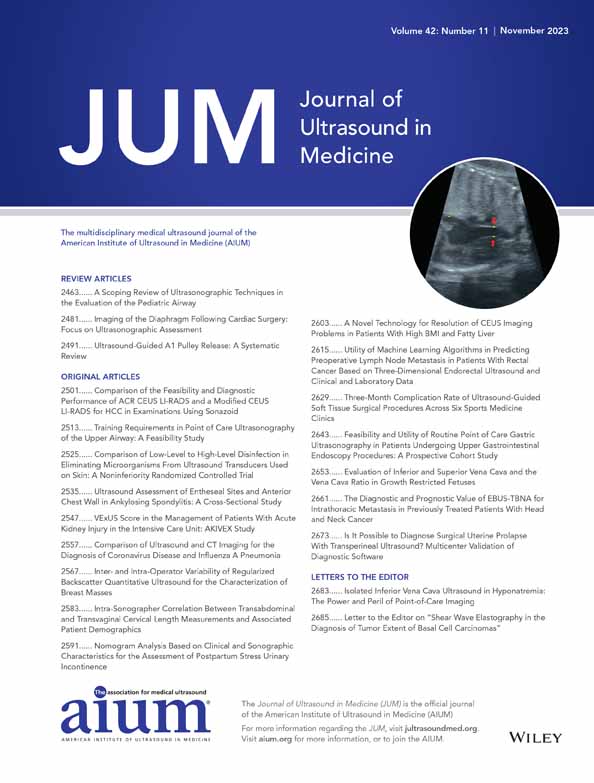Comparison of the Feasibility and Diagnostic Performance of ACR CEUS LI-RADS and a Modified CEUS LI-RADS for HCC in Examinations Using Sonazoid
Wei Liao and Qiao Que contributed equally to this work.
Yun He and Hong Yang were co-corresponding authors.
Thanks to Key Laboratory of Ultrasonic Molecular Imaging and Artificial Intelligence, Guangxi Key Laboratory of Early Prevention and Treatment for Regional High Frequency Tumor and Key Laboratory of Early Prevention and Treatment for Regional High Frequency Tumor (Guangxi Medical University), Ministry of Education for their support of this study.
Abstract
Objectives
The present study aimed to determine the feasibility of the American College of Radiology's (ACR) contrast-enhanced ultrasound (CEUS) Liver Imaging Reporting and Data System (LI-RADS) (version 2017) in examinations using Sonazoid and compare its diagnostic performance with that of modified LI-RADS in patients at high risk of hepatocellular carcinoma (HCC).
Methods
This retrospective study's sample population consisted of 137 participants with a total of 140 nodules who underwent CEUS with Sonazoid and pathological confirmation via surgery or biopsy from January 2020 to February 2022. The lesions were evaluated and classified based on the reference standards (ie, ACR CEUS LI-RADS and modified LI-RADS). The overall diagnostic capabilities of the two systems were evaluated in terms of accuracy, sensitivity, specificity, positive predictive value (PPV), and negative predictive value (NPV) with 95% confidence intervals (CIs).
Results
The participants had a median age of 51 years and an interquartile range of 43–58 years. Regarding LR-5 as a predictor of HCC, the accuracy results of the ACR LI-RADS and modified LI-RADS algorithms were 72.9 and 71.4%, respectively (P = .50). The sensitivity of both systems was the same (69.7%; 95% CI: 60.7–77.8%). Regarding LR-M as a predictor of non-HCC malignancy, the diagnostic performance of the algorithms was the same, with accuracy and sensitivity results of 76.4 and 73.3%, respectively (95% CI: 44.9–92.2%).
Conclusion
The findings indicate that modified LI-RADS had a moderate level of diagnostic performance for HCC in examinations using Sonazoid, which was comparable to ACR LI-RADS.




